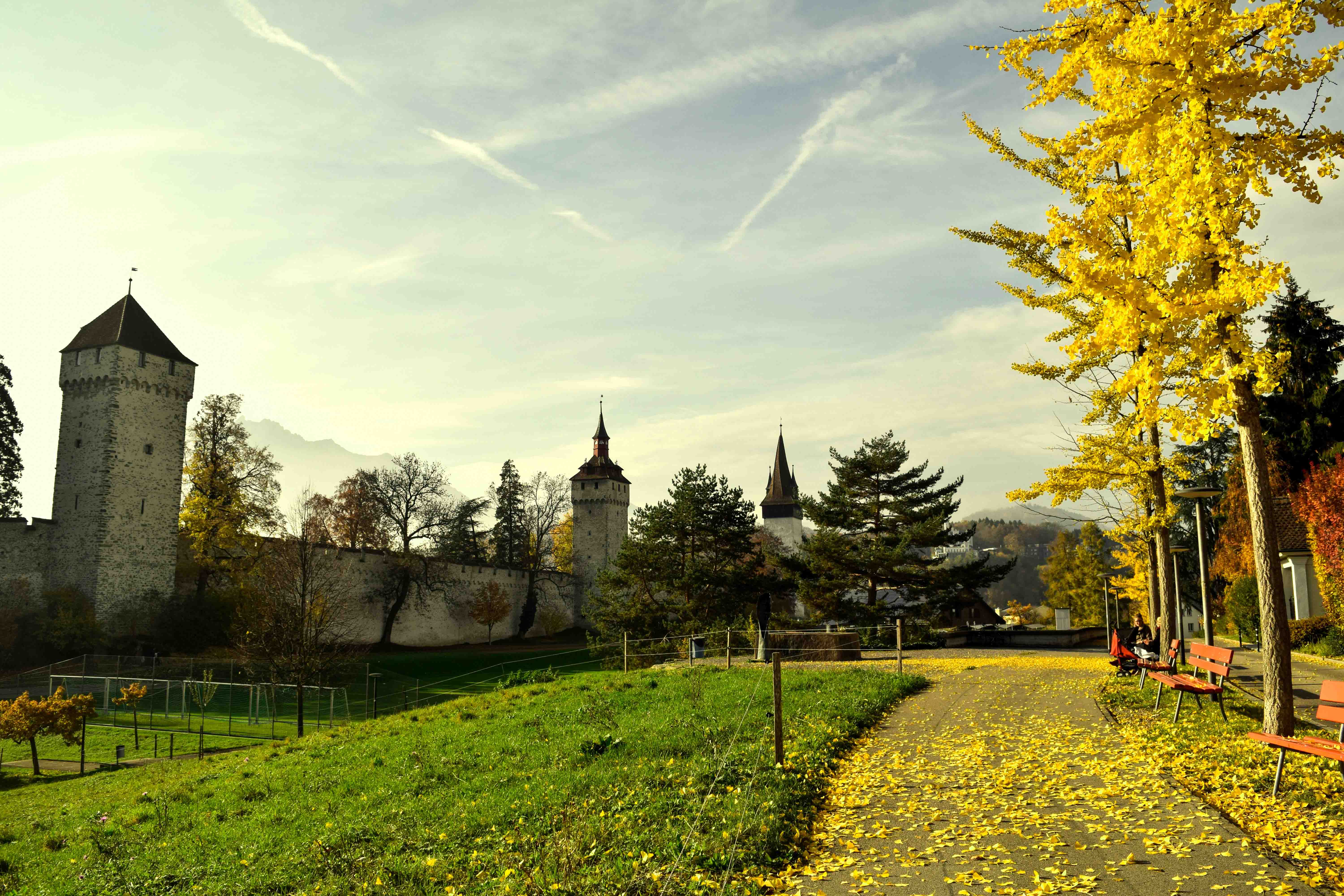To travelers, Lucerne conjures many sights and feelings. Tranquil, pristine, and nestled at the foot of Mount Pelatus, Lucerne has long been the tourism capital of Switzerland. With the old wooden bridges with centuries-old paintings, a church with a white-faced clock and gold hands, the old town with narrow lanes housing some secret old apothecary shops that would surely have the secret ingredients to create wizardly spells, a weeping lion that has become an emblem of creative dexterity, and the old wall with towers, which brings back the memories of all the fairy-tales one has read as kid; Lucerne seems nothing less than a town taken straight out of a story-book. No wonder, Lucerne has been a regular stop at the ‘Grand tour of Europe’ since the romantic era of the 19th century and has enticed travelers and philosophers like Mark Twain. In short, for a city of just 80,000 Lucerne notches way above in its touristic appeal.

Lucerne has a curious history, and it’s still debated how and when the city was founded. There are many dates to it, some sources quote it to be founded around 840 A.D, while some say the city was born much later around the 1200 A.D. The strands of this long history are visible throughout the city, and especially around the Musegg wall. The city is steeped in history, thanks to its strategic location between the protestant north and Catholic south, and acting as an important trade route in the medieval era.
The first impressions of Lucerne are probably made at its iconic train station, with a historic entrance portal. The train station faces the lake, which looks like dividing the town into two mesmerizing parts, one adorned with artistic masterpieces, and a bustling market, and the other housing the old town. Lake Lucerne’s tour boats let visitors take in the dramatic Alpine scenery that surrounds Lucerne. In every step, Lucerne offers an enticing glimpse of the Swiss quality of urban life. Efficient buses gliding through the city, pedestrian bridges across the river, crystal clear lake plied by cruise boats, bustling street market, a wide choice of museums and theaters; the canvass of Lucerne proudly advertises the Swiss quality of life.


The Chapel Bridge is the symbol of Lucerne. A sea of tourists flocks at this century-old wooden bridge that crookedly crosses the river at a diagonal, to take pictures of the town. In the middle of the bridge is an alluring water tower. The water tower is an octagonal wooden structure and was built as a prison and torture center. The other famous bridge — Mill Bridge (Spreuerbrücke) — also has the 17th-century paintings, some showing the Catholic past of the city, with emblems of the Roman empire, which granted the city the status of a free state as trade grew in the region.
Lucerne offers a range of choices for art lovers. Art buffs flock to the Rosengart Collection for its Picasso exhibits; gear heads and car lovers can have a ball at the Swiss Transport Museum, and adventure souls dig the city’s Glacier Garden.

Another emblematic sight is the statue of the weeping lion, an essential stop in Lucerne. The mighty lion is shown to have tears running down its cheeks, and on the side is a broken-off end of a spear, which is slowly killing the lion. The weeping lion commemorates the Swiss mercenaries who were killed or executed defending the French king during the French Revolution.
Walking through the city is an absolute treat to the eyes. Be it some quaint corner or a busy one, or a little uphill towards the Museggmauer and its nine towers, there’s a feeling of gay abandon in the city air. And the feeling increases with every step towards the Museggmauer that make up the remnants of the old wall that surrounded the city, defending it against would-be attackers. It’s a walk through a carpet of grass, and the old walls stand as some pictures taken from a fairytale, with the towers giving it a Disney like feel. At the Museggmauer, an enchanting contrast of life is portrayed with the serenity of Lucerne on one end, and the industries at the other. Beyond the lake is the Alps range, with the vastly impressive peak of Mount Pilatus dominating almost all landscape. From May to October, one can make the Golden Round Trip up Mount Pilatus. The trip starts with a boat from Lucerne to Alpnachstad, followed by an ascent on the world’s steepest cog railway to the summit. From there a cable car brings one down to Kriens, and from there back to Lucerne.



The café scenes
Lucerne is no stranger to sumptuous food. A hunt for good food will take you to the Hinter Musegg urban farm, in the middle of the city. The place offers regional produce, and sumptuous brunch choices, prepared with attention to detail. For splendid alpine views to go with lunch, Scala restaurant of the Art Deco Hotel Montana needs to be your choice. And in case you are short on time, head straight to the World Cafe at the Culture and Congress Centre, and choose from its wide display of wok-cooked dishes, and a gorgeous world cuisine buffet. And once you are done, you can go straight to the Art Museum, without losing any of your precious time.
A day may be good to cover Lucerne, but the memories you bring of art and heritage, alpine sublimity, medieval surrealism, and urban quality of life, will last with you for a lifetime.


Fast fact: To help travelers, Switzerland Tourism has created a tourist app called the Luzern City Guide, which includes a city tour of Lucerne and a tour of Musegg Wall. From Lucerne starts the iconic Gotthard Panorama Express, which goes some of the most fascinating regions of Switzerland, inviting views of central Switzerland wonderful mountain landscapes, and natural wonders.






